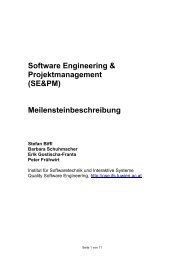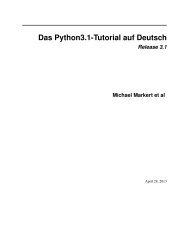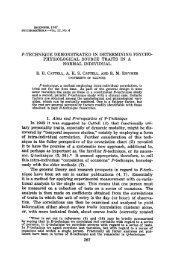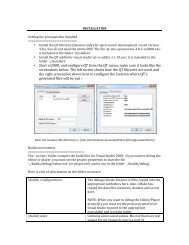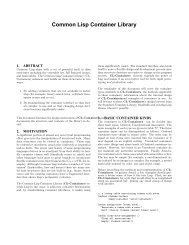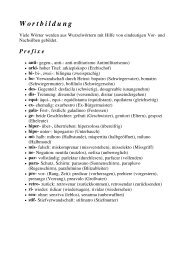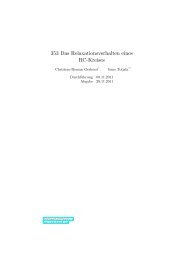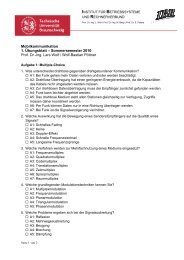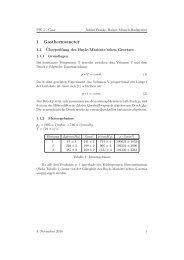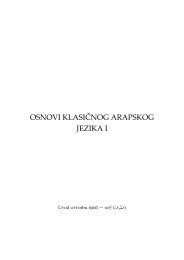wradlib Documentation - Bitbucket
wradlib Documentation - Bitbucket
wradlib Documentation - Bitbucket
Create successful ePaper yourself
Turn your PDF publications into a flip-book with our unique Google optimized e-Paper software.
<strong>wradlib</strong> <strong>Documentation</strong>, Release 0.1.1<br />
Parameters data : 2d-array<br />
2 dimensional array (azimuth, ranges) of floats;<br />
if no mask is assigned explicitly polar data should be a masked array<br />
mask : array<br />
boolean array with pixels to be interpolated set to True;<br />
must have the same shape as data<br />
Interpolator : a class which inherits from IpolBase<br />
Returns filled_data : 2d-array<br />
array with interpolated values for the values set to True in the mask<br />
Examples<br />
>>> import numpy as np<br />
>>> import <strong>wradlib</strong> as wrl<br />
>>> # creating a data array and mask some values<br />
>>> data = np.arange(12.).reshape(4,3)<br />
>>> masked_values = (data==2) | (data==9)<br />
>>> # interpolate the masked data based on ’’masked_values’’<br />
>>> filled_a = wrl.ipol.interpolate_polar(data, mask = masked_values, Interpolator = wrl.ipol.Li<br />
>>> wrl.vis.polar_plot(filled_a)<br />
>>> # the same result can be achieved by using an masked array instead of an explicit mask<br />
>>> mdata = np.ma.array(data, mask = masked_values)<br />
>>> filled_b = wrl.ipol.interpolate_polar(mdata, Interpolator = wrl.ipol.Linear)<br />
>>> wrl.vis.polar_plot(filled_b)<br />
3.7 Data Quality<br />
This module will serve two purposes:<br />
1. provide routines to create simple radar data quality related fields.<br />
2. provide routines to decide which radar pixel to choose based on the competing information in different quality<br />
fields.<br />
Data is supposed to be stored in ‘aligned’ arrays. Aligned here means that all fields are structured such that in each<br />
field the data for a certain index is representative for the same physical target.<br />
Therefore no assumptions are made on the dimensions or shape of the input fields except that they exhibit the numpy<br />
ndarray interface.<br />
beam_height_ft<br />
beam_height_ft_doviak<br />
pulse_volume<br />
Calculates the height of a radar beam above the antenna according to<br />
Calculates the height of a radar beam above the antenna according to the 4/3 (four-thirds -> ft) effec<br />
Calculates the sampling volume of the radar beam per bin depending on range and aperture.<br />
3.7.1 <strong>wradlib</strong>.qual.beam_height_ft<br />
<strong>wradlib</strong>.qual.beam_height_ft(ranges, elevations, degrees=True, re=6371000)<br />
Calculates the height of a radar beam above the antenna according to the 4/3 (four-thirds -> ft) effective Earth<br />
3.7. Data Quality 51



